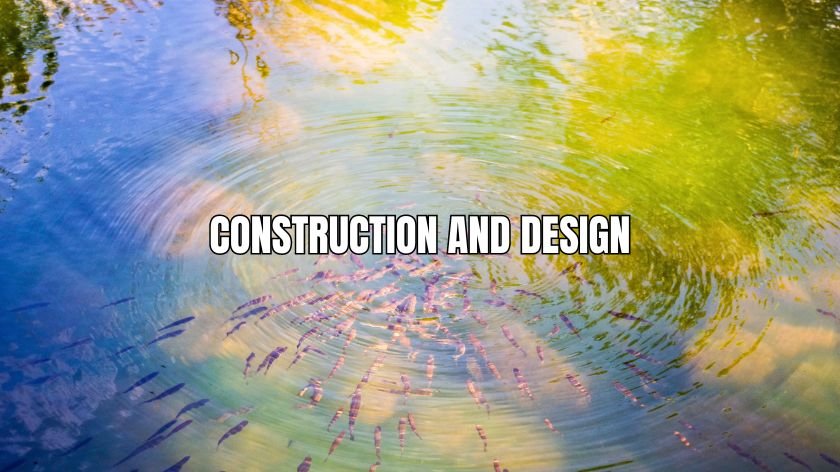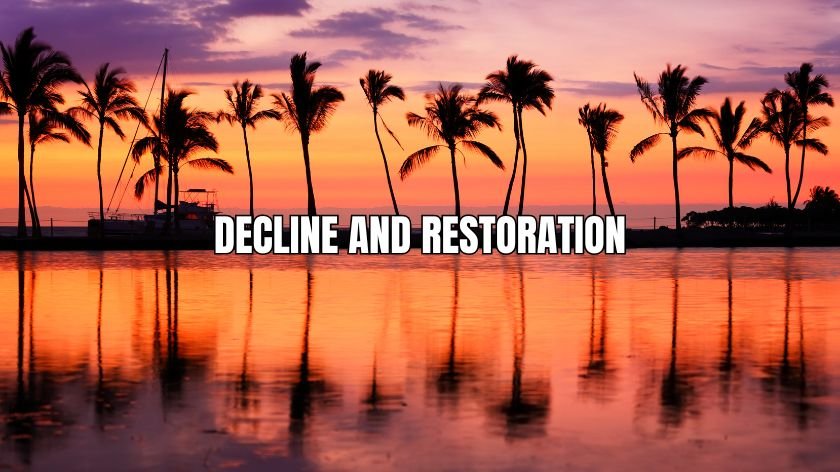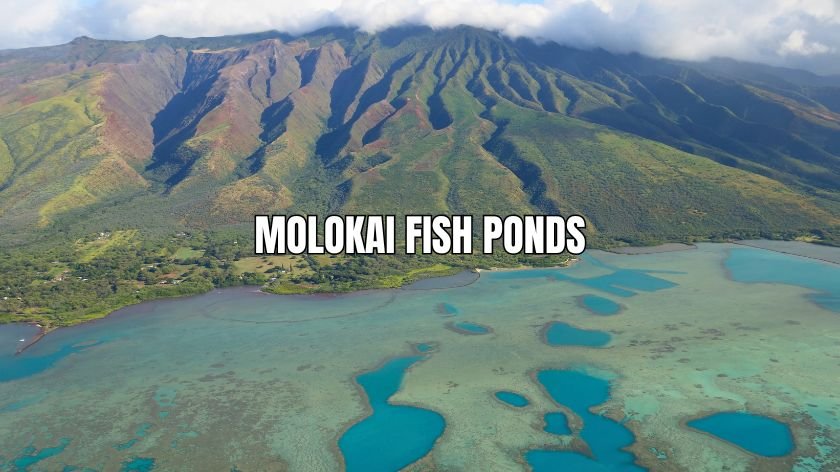Molokai Fish Ponds
The Hawaiian island of Molokai is home to a unique aquaculture system developed centuries ago. Scattered along the island’s southern shores lie over 60 historic Hawaiian fishponds dating back 800 years or more. Molokai Fish Ponds demonstrate an advanced understanding of aquaculture principles and provided sustenance for native islanders in ancient times.
With their ingenious design of lava rock walls and coral, the fishponds efficiently raised fish with minimal effort. They also held cultural significance, with certain ponds reserved for royalty. Although many decayed after Western contact, a growing restoration movement seeks to preserve this architectural legacy while reviving the ecological knowledge of ancient Hawaiians.
Molokai Fish Ponds Construction and Design

The ancient fishponds of Molokai were engineering marvels, designed to leverage natural tidal flows. Semi-circular walls extended out from the shoreline, made from stacked lava rocks and coral rubble. These barriers allowed water to flow in and out freely while trapping fish inside.
Gates called mākaha were built into the walls, enabling small fish to swim into the pond but preventing their escape once grown. Some walls stretched over 600 feet long and 10 feet high to contain entire ecosystems. The rock perimeter was often visible far out in the water, surrounding concentrated schools of fish.
Inside the ponds, the fish found an optimal habitat with protection from predators. By controlling access through the gates, pondkeepers could harvest fish sustainably as needed. The design required minimal effort while maximizing productivity.
Purpose and Function of Fish Ponds

The fishponds served the Native Hawaiians as both a food source and cultural treasure. Fish entered the ponds through wooden gates and resided there, feeding off the natural productivity of the pond. The Hawaiians would then catch fish by reaching over the rock walls or pulling up slabs to let fish swim out.
The ponds provided fish efficiently, with each acre producing around 400 pounds annually. This bounty was carefully managed and primarily fed Hawaiian aliʻi (royalty). Certain ponds, like the Aliʻi Fishpond near Hotel Molokai, were strictly reserved for kings.
Besides holding fish, the ponds offered other functions. Many were integrated with streams, bringing nutrient-rich freshwater down from the uplands into the pond. This attracted fish and enhanced natural food growth before returning water to the ocean. The ponds also gave protected access to the ocean for activities like seaweed harvesting. You can read about Molokai fishing here.
Notable Ponds
Of the dozens of fishponds surrounding Molokai, several stand out for their history and engineering. Near the southeast tip, the Aliʻi Fishpond stretches over 15 acres right off the coast. With its ease of access from land, it made a convenient royal pond for centuries.
Further eastlies one of the island’s greatest fishponds, Keawanui. This massive pond contains over 160 acres encompassed by 2000 feet of rock wall. Believed to be over 700 years old, Keawanui functioned for centuries before falling into disrepair. Its remains became a designated National Historic Landmark in 1962.
Neighboring Keawanui to the west is ʻUalapuʻe fishpond, another national landmark dating back 800 years. This rhomboid-shaped pond is noted for its exceptional wall construction and sluice gates. It also covers 160 acres, representing one of Molokai’s largest and most productive aquaculture sites. You can read more about visiting Molokai here.
Decline and Restoration

During the 19th century, fishponds fell out of use as large-scale agriculture transformed Molokai. When the Hawaiian monarchy was overthrown in 1893, ponds lost their protected cultural status and were abandoned. Coastal development and erosion further damaged many sites.
Today, efforts are underway to bring fishponds back to life for both ecological and cultural reasons. Thirteen ponds around Hawaii have undergone restoration, with six currently operating. Nonprofit groups and volunteers handle projects, incorporating both traditional and modern methods.
One restored fish pond playing a key role is Keawanui on the east end. The Hawaiian Learning Center located here serves as an educational facility to study aquaculture. Community members can get involved with the revival of this 700-year-old life-sustaining technology.
Across Hawaii, over 35 community organizations are working to rebuild dozens more ponds. Their success relies on oral histories, archaeological surveys, and trial-and-error. They also face challenges like securing walls and maintaining water quality. However, each restoration renews community pride in Native Hawaiian aquaculture.
Conclusion
The fish ponds of Molokai represent the apex of ancient Hawaiian aquaculture. Their innovative design sustained large yields with minimal labor for centuries. While Westernization led to abandonment, the ponds are now being rediscovered as models of resilience. Ongoing restoration worldwide showcases these monuments’ continued cultural and ecological importance. The fishponds stand as testaments to native ingenuity, with their rock walls still riding the tides after 800 years.

